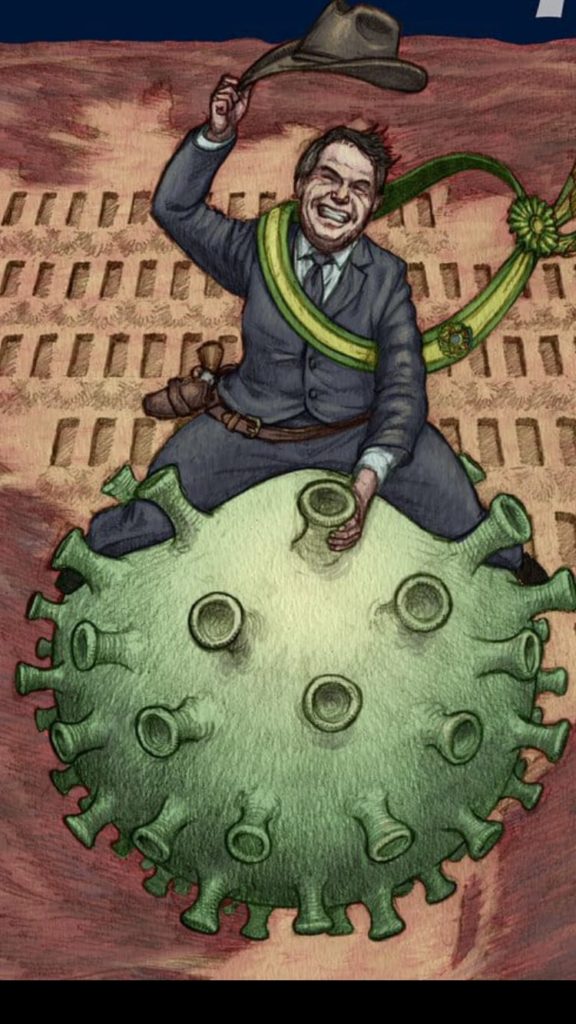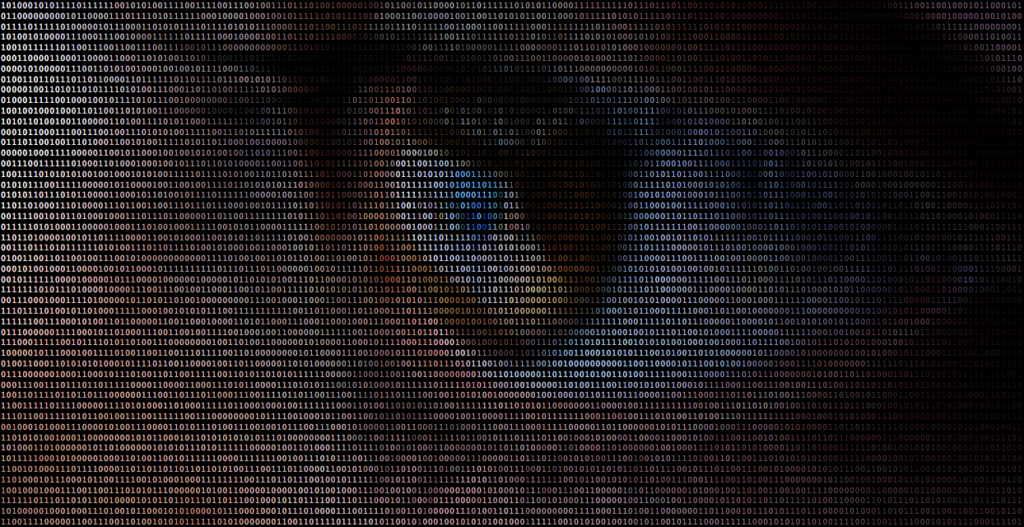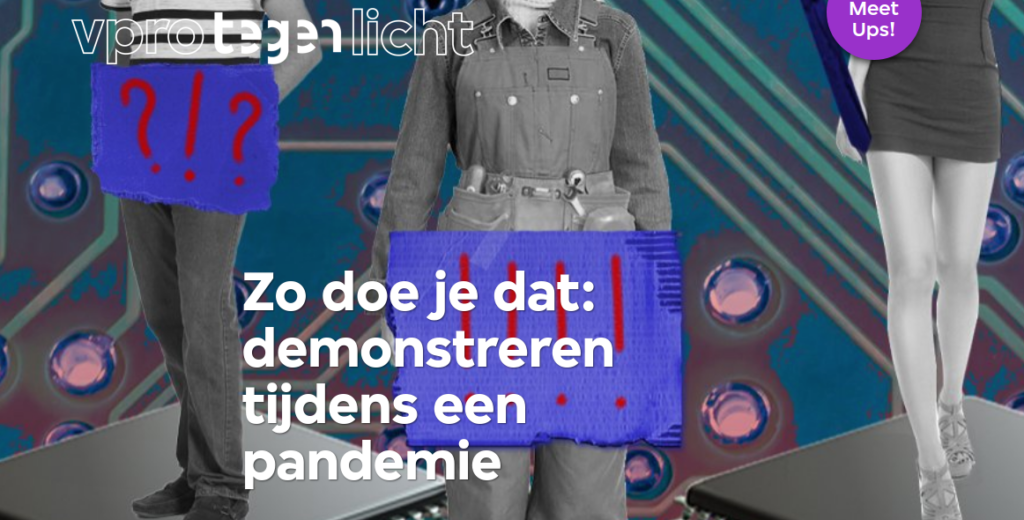Header photo references: Vahid Salemi – Associated Press. LA Times.
Authors: Hossein Kermani and Maria Faust
This article argues that Instalive is not only a channel for personal communication; it also functions as an alternative TV in restrictive contexts with limited access to free and independent media. Therefore, in this article, we briefly discuss how and to what extent Iranians use Instalive to produce, share, and access content which is prohibited in Iranian official media, thus, resisting the political and social structures.
COVID-19 has become the new ‘normal’, and substantially altered the lives of people across the world and led to new forms of (online) communication. One of the most drastic changes to everyday life has been the increase of digital and especially social media use which imposed both opportunities and challenges. With an estimated 4.5 billion internet users worldwide, social made users make up 3.8 billion of these, this equals to almost 85% of overall internet users – now since the surge of the pandemic, social media use has risen from 75 to 82 minutes per day. Social distancing and lockdowns during spring 2020 caused people to search for new forms of connection through video chat. For example, as of 2020 TikTok has 1.5 billion users worldwide; its download rate has increased by more than 100 million from 199.4 in Q4 2019 to 315 million in Q1 2020. At the same time – and this is certainly challenging democratic ideas, both Douyin, the Chinese mainland, authoritarian version, and TikTok, share the same censorship practices of Bytedance, even more so in times of COVID-19. Instalive, the Instagram feature for live video chat, however, increasingly surged as an alternative digital video format across the world. While it is generally contributing to the changes in people’s communicative practices, it is of more importance in authoritarian contexts such as in Iran.
Social and digital context in Iran
In Iran, the country in the Middle East with the severe COVID-19 effects, social media use has also significantly increased. Iranian users have been keen on adopting social media in their everyday life from Yahoo messenger to Twitter and Instagram. To a great extent, social media has played a crucial role in contemporary political protests in Iran (e.g., 2009 Green Movement). The popularity of social media in Iran can be attributed to the fact that these platforms provide dissident Iranians, who were traditionally deprived of access to mainstream media, with a space to share their generated content with networks of others. That is probably why Iranians have continued to use social media through circumvention tools, despite the state’s disincentive actions like filtering, and hardliners denouncing and denial.
In 2020, following Telegram and WhatsApp, Instagram is the third most used social media platform in Iran with roughly 24 million users out of 84 million inhabitants. Instalive has been becoming more and more popular, especially amongst Persian women. During lockdown, Instagram users arguably increased by about 31%, with some users even using it 4 times as much as before. Thus, Instalive affected people’s communicative practices. For instance, many Iranians who had not experienced online video chat before, have been starting to using Instalive to chat with their families and friends Besides such personal impacts, Instalive works as an alternative TV for Iranians, providing an opportunity for both media practitioners and ordinary citizens to broadcast and consume their favorable content, which they probably cannot access through national and official media.
Islamic Republic of Iran Broadcasting (IRIB) vs. Instalive as an Alternative TV in Iran
Not only all the official media are severely controlled, but establishing and operating private television channels and radio stations are prohibited in Iran. IRIB as Iran’s national radio and television organization, which has the exclusive right to broadcast audio-visual content in national scale, is managed directly by state authorities. It mainly broadcasts the state-aligned content in order to underpin the state’s hegemonic discourse. In this regard, many dissident Iranians, including political activists and public figures, such as singers and cinema stars (i.e., media practitioners), do not have any chance to emerged in its programs. Moreover, other Iranian audiences have been deprived from watching their favorite programs and figures on air. For instance, the IRIB, as well as the other official media are banned from mentioning Mohamad Khatami, Iranian former reformist president. It is argued that there is some form of blacklisting including individuals who never should be shown in Iran’s national TV such as Mohammad Reza Shajarian, the most famous Iranian singer.
In this restrictive context, both camps, i.e., media practitioners and ordinary citizens perceive Instalive as an alternative platform which can serve their need to a form of free audio-visual media. They are using this feature to broadcast and consume forbidden content. Instalive was employed by some of the presidential campaigns to advertise their candidates during the 2017 election, but its use was intensified and diversified during the lockdown. For example, Hassan Rouhani, the president of Iran, used Instalive to broadcast his presidential speeches as he argued that the IRIB refused to publicly do that. Now, many of Iranian’s celebrities and microcelebrities use this platform to broadcast sexual and socio-cultural content which are mainly against the Islamic rules.
While no program about sex is allowed on the IRIB (even educative programs or erotic scenes), Tataloo-Neda Yassi Instalive broke the record of Instalive viewers around the world by more than 630k viewers. Tataloo is an Iranian rapper who had more than 4 million followers at that time, well known by his weird and unconventional behavior. However, his page was closed by Instagram because of the accusation of child grooming. Yassi is also an Instagram microcelebrity who is famous because of her sexual posts and stories. Their Instalive was the perfect representation of anything forbidden in Iran regarding sex. Tataloo and Yassi talked about having (group) sex together, explaining sexual behavior, and promoting having free relations with many sexual partners. Given that the only acceptable form of sexual relationship is marriage in Iran, and all other forms of sexual behavior are forbidden and being punished, this Instalive crossed all of the state’s so-called ‘red lines’ as well as the IRIB policies.
Nevertheless, not all popular Instalives during the Covid-19 time were as offensive, in the sense of the state’s discourse, as the former example. For instance, let us look at the case of Aghamiri-Ahlam Instalive. Hassan Aghamiri is a clergy, and Ahlam is an Iranian female singer; they are actually representing two hostile camps in Iran. Women’s singing in public is forbidden in Iran by all means, and it is not allowed on the IRIB conclusively. This restriction is allegedly exerted by the Islamic rules. Here, clergies are considered as the representatives of Islam. It is anticipated that clergies condemn female singing and are not to be seen with them anywhere, as has been the case since the Islamic revolution. To this extent, Instalive disobeyed the state’s Islamic rules, playing with socio-cultural structures in Iran. A clergy co-singing with a female singer, as it happened in that live show, is something that would never be seen on the IRIB.
These two examples clearly show how Iranians use Instalive to overcome the state’s and IRIB’s restrictions and limitations. Employing Instalive, media practitioners produce content based on what is forbidden in the IRIB. Such content gained much attention by Iranians who have been deprived of watching such programs in the national TV.
What’s next? Instalive after COVID-19
Instalive introduced new opportunities for citizens in closed societies to share and discuss sensitive content. While Iranians use Twitter to discuss politics, they use Instagram to play with the state’s hard cultural and social restrictions. In this way, Iranians are undermining the power of the state’s exclusive TV as they perform or watch Instalives. On the other hand, the state clearly showed its intention to censor and control Instalives. Ali Zolghadri, the deputy chief of Tehran’s security police, stated that they would crash those show obscene behavior or say norm-breaking sentences on Instalives. Despite such hard comments, Iranians find alternative spaces to circumvent the state’s hard limitations. This time, they transformed Instalive into a kind of national TV. No matter its use would increase or decrease in the days after the COVID-19 crisis, it can be assumed that Instalive would remain a serious competitor to the IRIB, challenging its exclusivity and hegemony in more ways than we have seen so far.
About the authors:
1st author: Hossein Kermani, PhD in Social Communication Science (University of Tehran), is studying social media, digital repression, computational propaganda, and political activism in Iran. His research mainly revolves around the discursive power of social media in making meaning, shaping practices, changing the microphysics of power and playing with the political, cultural and social structures in Iran.
2nd author: Maria Faust, M.A. in Communication/Media Studies and Culture Studies, is a Doctoral Candidate at Leipzig University, Germany. She has published articles, a special section and two edited books on digital media, authoritarian contexts, temporal change, de-Westernization, the Global South(s), theory-building and visual culture(s) and continues her work in these fields.









